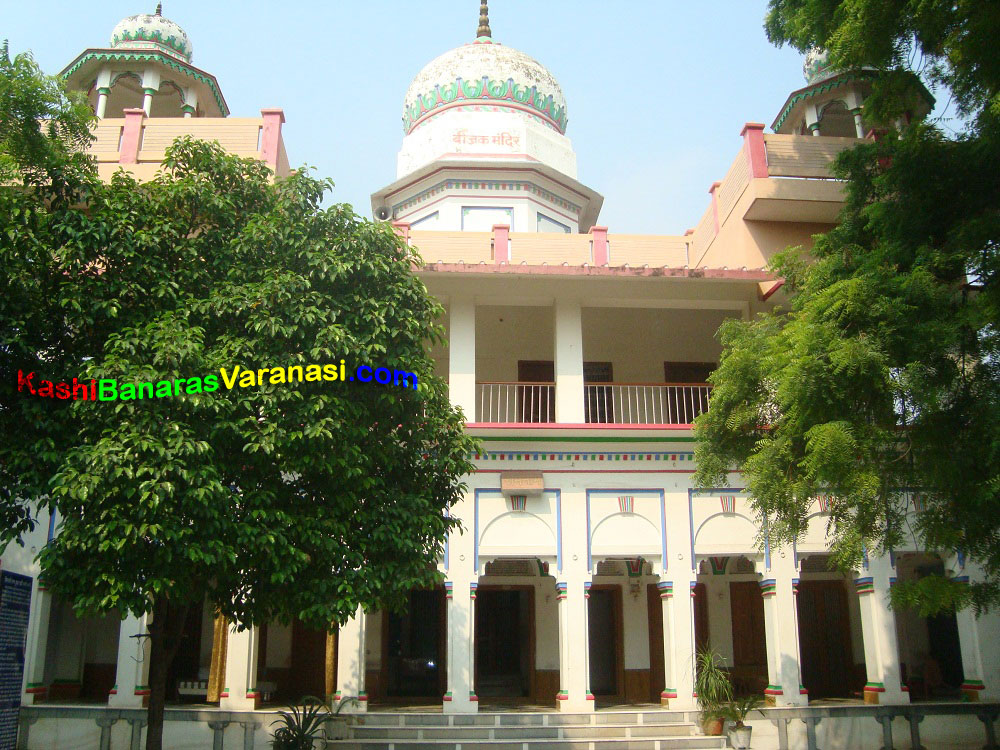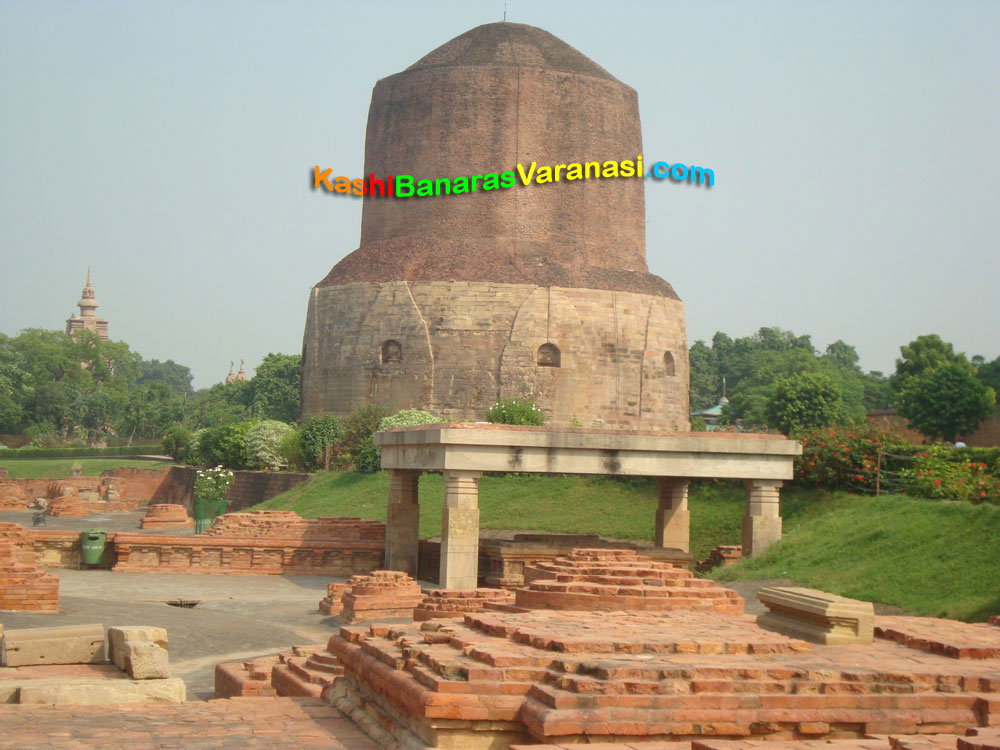
Sarnath Varanasi
Varanasi is an ancient city in India known for its timeless beauty. The majestic Ghats, the ancient temples, and the zigzag lanes all come together to create an enchanting sight. As the sunsets, the air is filled with the sound of temple bells, the smell of incense and the sight of lit oil lamps floating along the River Ganges. It is said that one can find spiritual peace in this holy city. It is no wonder that the city has attracted pilgrims for centuries.
Along with several places to visit, one of the famous places that add one more star to the beauty of Varanasi is Sarnath. Few kilometers away from the city, the place holds immense importance as well as pleasure scenes to the eyes. Sarnath is considered to be one of the four most important pilgrimage places for Buddhists all over the world. As the site of the Buddha’s first sermon, it holds a unique place in history. The Varanasi trip will be totally incomplete without visiting Sarnath.
Diving Deep into the Beauty of Sarnath
Sarnath is a holy place with a lot of spiritual and natural beauty. It is surrounded by beautiful green fields and quiet ponds. Many people visit the deer park and the archeological site to enjoy the quiet atmosphere, especially in the evening when it glows with a gentle orange light and the shadows of the majestic deer.
The name Sarnath comes from “Sarangnath”, who is also known as the Deer God. Among the four most important Buddhist pilgrimage destinations, Lord Buddha himself visited this city, also known as Isipatana. It is also said that Sarnath is the location of Lord Buddha’s “Dhammacakkappavattana Sutta”. Consequently, Sarnath is the place to go if you value peace or want to learn about India’s rich history.
Apart from being a pilgrimage site, Saranath is also an important archaeological location in India. The main attraction of this site is a grand Stupa that was built in 249 BC right after Buddha’s death. The Ashoka Pillar, built in the 3rd century BC along with many other remains of the different dynasties scattered around the site helps to explore the architectural heritage of the place.
Uncovering the History of Sarnath
Sarnath has many names, like Mrigadava, Migadya, Rishipattana, and Isipatana. Each name has a spiritual meaning. Sarnath is believed to be the place where Gautama Buddha shared his first sermon after attaining enlightenment and thus highlighting the significance of four noble truths and eightfold path. In order to spread his teachings of enlightenment and nirvana, Buddha traveled to Sarnath. The deer park was the site of his first sermon.
Multiple Muslim invasions of India caused damage on the country’s cultural treasures throughout the 10th and 12th centuries. Sarnath was left in destruction and almost completely out of the map of India as a result of these invasions, but a small group of British archaeologists recognized the site’s historical value in the nineteenth century. As a result, Sarnath gained popularity as a major Buddhist holy site.
As a means of spreading the dharmic teachings of Buddha, the Great Emperor Ashoka constructed a number of stupas and monasteries in this area. The museum displays a pillar that Ashoka constructed in the third century BC. It stands 15.24 meters tall and depicts four lions. Multiple Buddhist temples and other monuments were built in Sarnath between the third and eleventh centuries BC, when the religion was at its height in popularity.
A Journey to the Holy Land of Sarnath
When it comes to the Indian spiritual and cultural landscape, you can’t miss out on mentioning the ancient city of Varanasi, one of the most sacred places in Hinduism. There are multiple sites of pilgrimage associated with the city, chief of them being the holy town of Sarnath, located 10 kms away from Varanasi.
A trip to Sarnath is certainly worthwhile, giving one the opportunity to explore the ancient world of Indian culture and religion. There is something here to please everyone, from history lovers to devotees and art enthusiasts. From exploring about the sermons of Buddha to appreciating the incredible sculptures from the past, Sarnath will prove to be a memorable journey. With so much to discover, there will never be a shortage of things to do in Sarnath
Exploring the Mystical Site of Sarnath
Apart from the archaeological sites, there are also many temples that are visited by numerous devotees throughout the year. As you walk through the town, many beautiful temples, old monasteries, and grand buildings take you back to a more peaceful time. The places to enjoy near Sarnath are as follows:
Deer Park: It is about 2km from Sarnath Railway Station. Sarnath’s Deer Park (also known as Istipana) is both a sacred site and a small zoo. There are big enclosures for deer and reptiles, as well as a bird house and a pond. There are many deer and blackbucks freely explore the vast, beautiful landscape. There are also a variety of birds, as well as emus, crocodiles, and turtles. The entry hours are from 8 a.m. to 5:45 p.m. The cost to get in is Rs. 10 for Indians and Rs. 50 for foreigners. Different charges are applied for photography.
The Chaukhandi Stupa: It is situated 1.5 km from Sarnath Railway Station. In the fifth century, this stupa was constructed to commemorate the spot where the Buddha gathered with his followers for the first time. This is why the structure is so important to architecture and history. The stupa’s tower was constructed in the 16th century to honor Emperor Humayun’s visit to the site. The entry hours are from 6 a.m. to 5 p.m. The cost to get in is Rs. 5 for Indians and Rs. 100 for foreigners.
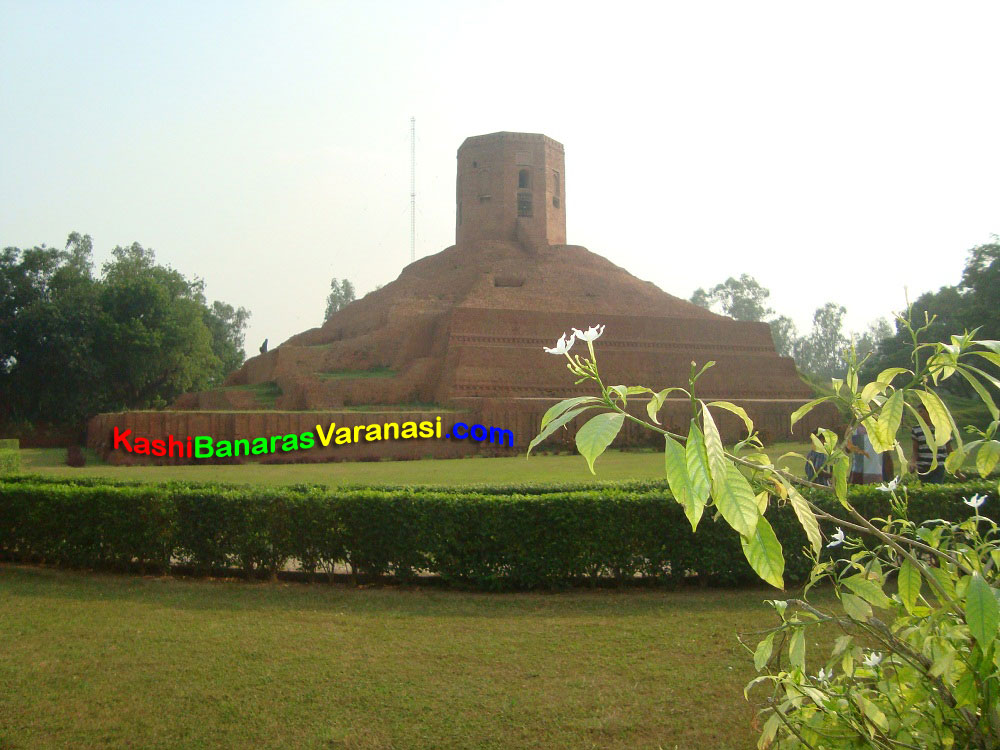
Ashoka Pillar: The great Mauryan emperor Ashoka built the Ashoka Pillar, which serves as the national symbol of our country. Together with Dhamek Stupa, it reaches a height of 50 m. Several monks can be seen meditating in the compound, which is open to visitors. A chakra is depicted at the base of the Ashoka Pillar, which also features four upright lions.
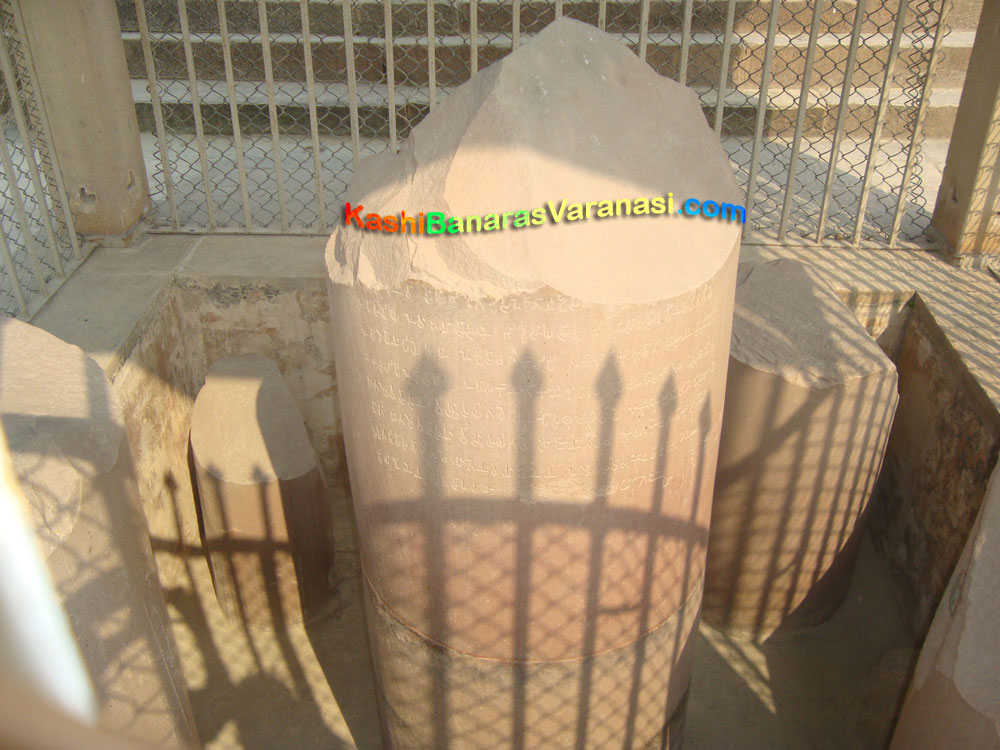
Tibetan Temple: It is situated 1 km from Sarnath Railway Station. There is a statue of Shakyamuni Buddha and Tibetan Buddhist paintings (Thangkas) decorating the walls of the temple’s Buddhist shrine. The prayer wheels are on display in the courtyard of the temple. Prayer scrolls are released when the handles are turned in a clockwise direction. The entry hours are from 6 a.m. to 6 p.m. The cost to get in is free for all the visitors.
Dhamekh Stupa: It is situated 1.5 km from Sarnath Railway Station. This is the most visible structure in Sarnath. Dhamekha appears to be a distorted form of Dharma Chakra, which means rotating the Dharma wheel. The original stupa was built by Ashoka. The stupa is currently 31.3 m high and 28.3 m in diameter. The stupa’s lowest section is entirely covered with finely carved stones. The Dhamekha stupa is regarded as the sacred site where Buddhism’s voice was first heard. The entry hours are from 6 a.m. to 5 p.m. The cost to get in is Rs. 25 for Indians and Rs. 100 for foreigners.
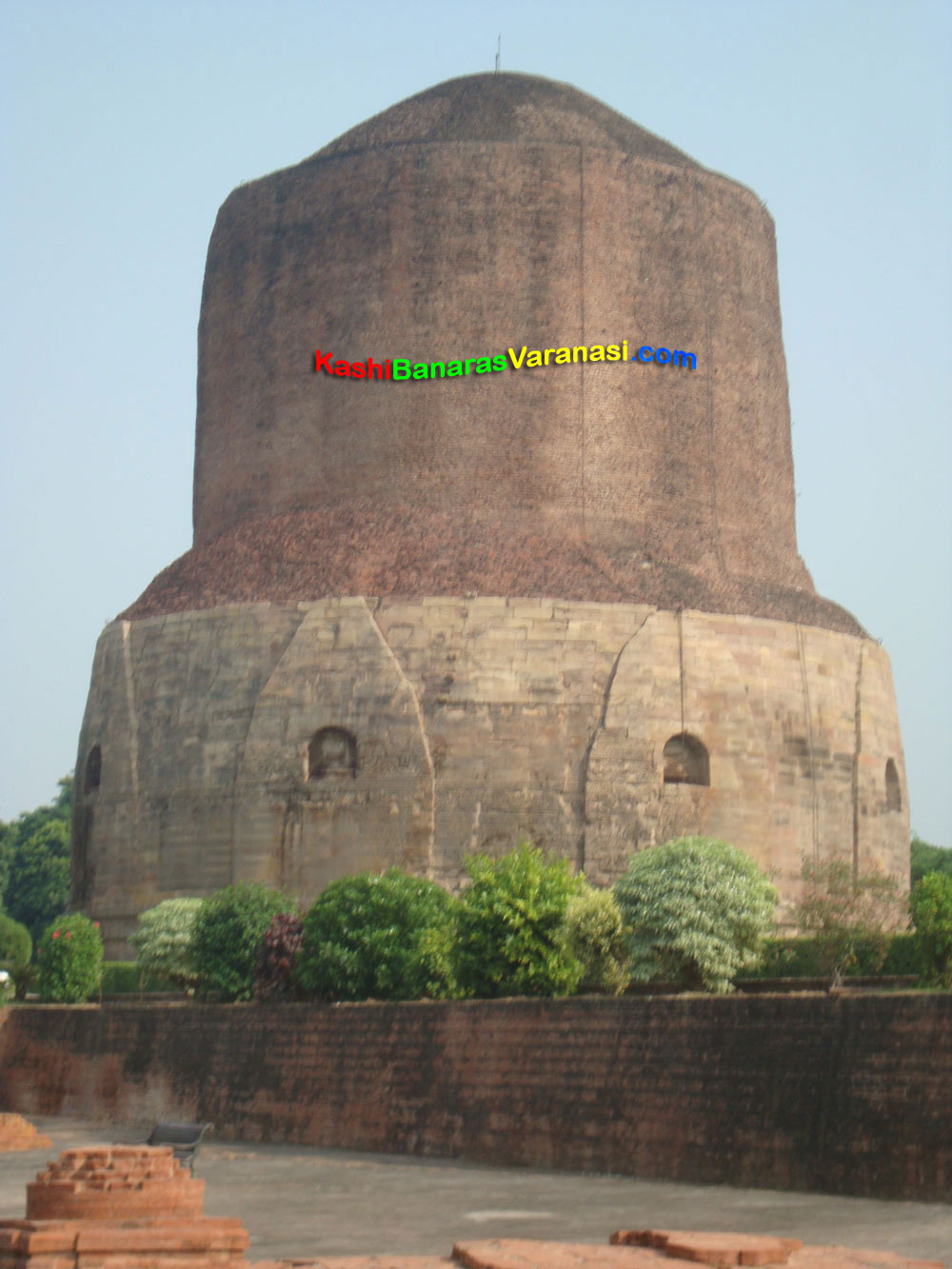
Sarnath Museum: It is situated 1.5 km from Sarnath Railway Station. The Archaeological Museum in Sarnath is a must-see for every historical fan. Buddhist antiquities were moved there from their original location at the site of Buddha’s first lecture. This sandstone museum dates back to the early 20th century. In 1910, the museum first opened to the public. The museum is accessible from 9 a.m. to 5 p.m. If you plan on visiting Sarnath, keep in mind that the museum is closed on Friday. The cost to get in is Rs. 5.
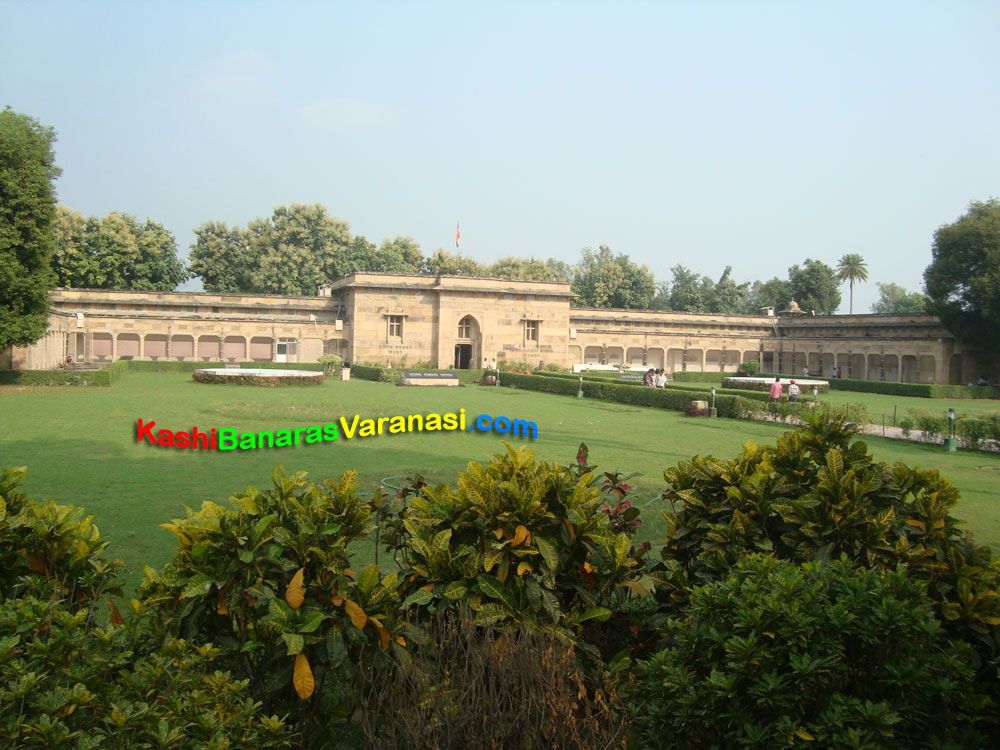
Mulagandhakuti Vihar: It is situated 1 km from Sarnath Railway Station. The majority of visitors come to Sarnath to see this. The tall structure stands at a height of 110 feet. This is where Lord Buddha stayed when he visited Sarnath. The entry hours are from 4.30 AM – 11 AM & 1.30 PM – 5.30 PM. The entry for all the visitors is free.
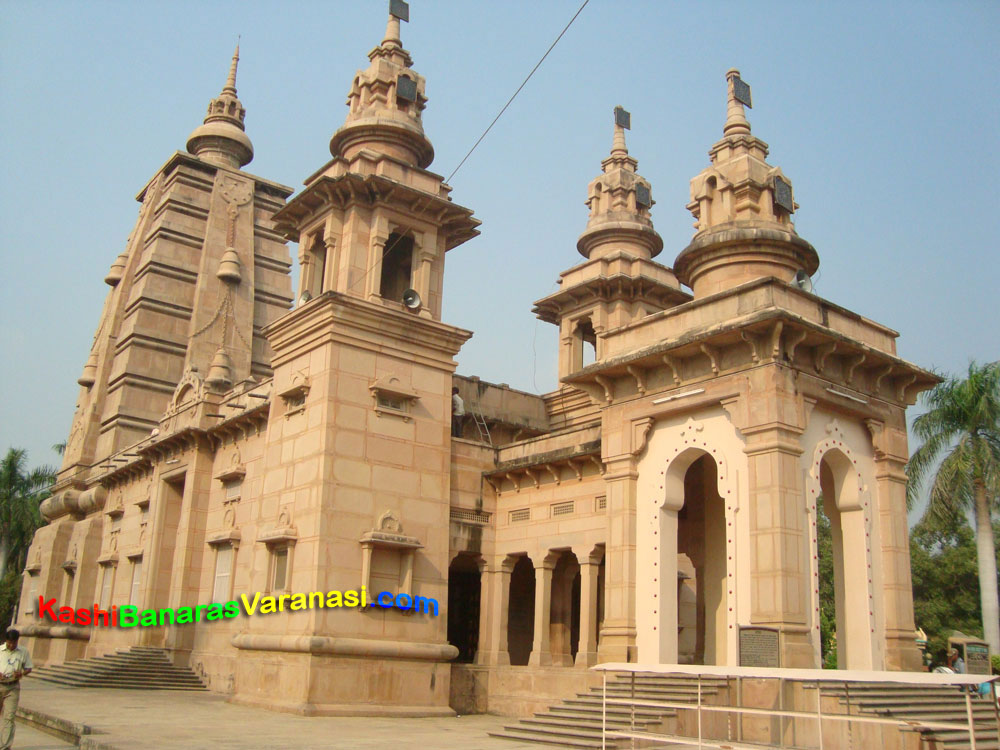
Thai Temple: It is located 1.5 km from Sarnath Railway Station. The temple, also known as Wat Thai, is filled with beautiful images of Buddha, such as the Laughing Buddha and Buddha instructing his students. The gorgeous architecture, calm environment, and inspiring Buddha sculptures create an atmosphere of calmness. Just beyond the temple’s walls is a lovely garden. The entry hours are from 6 a.m. to 6 p.m. The entry for all the visitors is free.
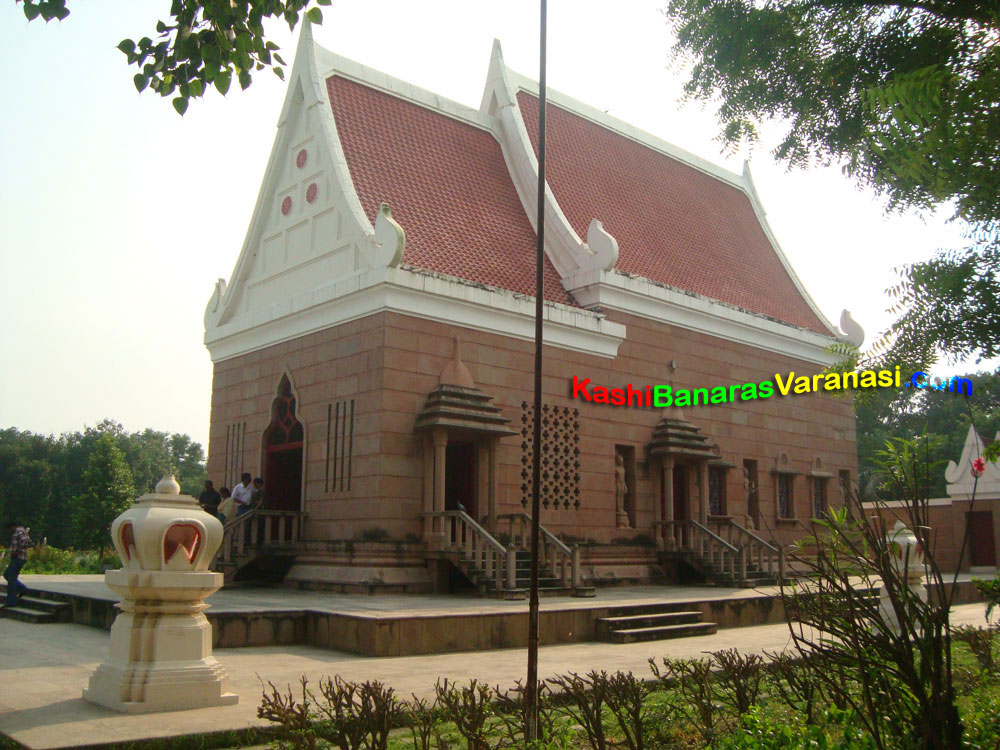
Buddha Statue: A big Buddha Statue is located at the Thai Buddha vihara of height 80 ft. It is considered as the tallest standing Buddha statue at Sarnath. It was built originally of stone over 14 years during the Indo-Thai joint effort.
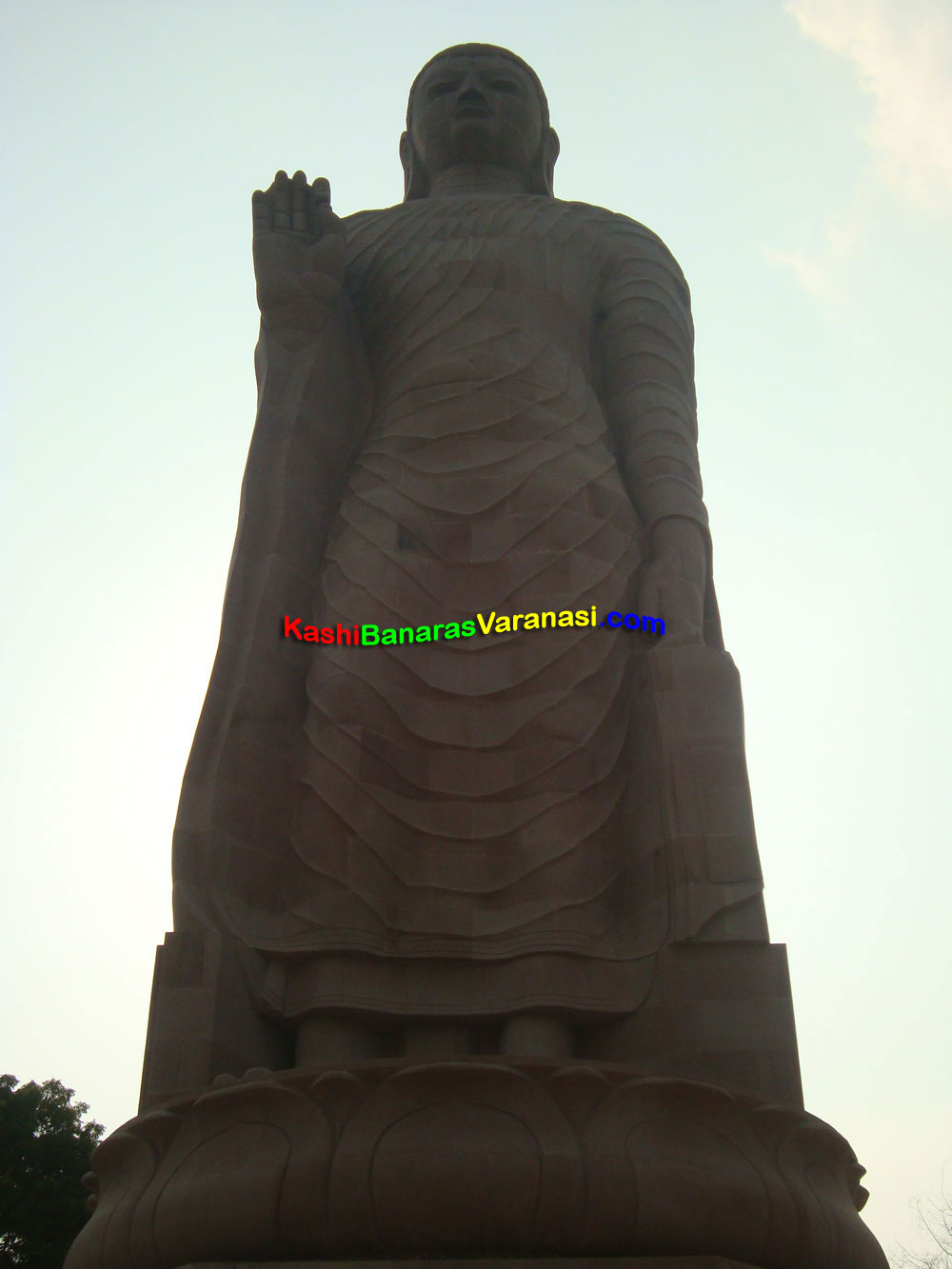
Sri Digamber Jain Temple: Sri Digamber Jain Temple is located near to the Dhamekh Stupa. It is the most religious place for the Digambara monasticism which is a branch of the Jain Dharma.
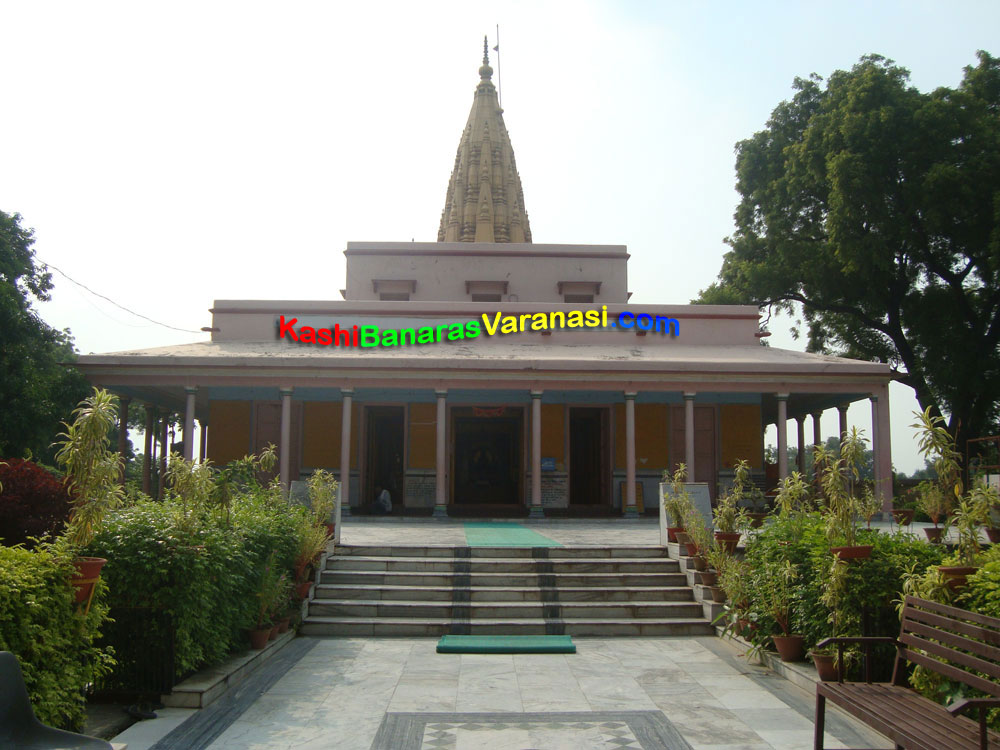
Dharmarajika Stupa: Dharmarajika Stupa is the very significant place located near to the Dhamekh Stupa. It is considered that this place has the remains of bones of the Lord Buddha. It was built by the King Ashoka which was destroyed in 1794 by the Jagat Singh (to get bricks for another construction purpose) during which a box with bones was found. The box is still kept safely at the Indian Museum, Kolkata. It is considered as the bones were disposed off in Ganga by the Jagat Singh.
Bodhi Tree: It is located near to the Mulagandhakuti Vihara Buddhist temple, called as the holy Bodhi vriksha. It is the most holy place for the people of Buddhist religion as Lord Buddha had attained his enlightenment here beneath the tree. It is planted at the Sarnath by the founder of Maha Bodhi Society of India (Sri Devamitta Dhammapala) on 12th of November in 1931 by taking a branch from the real Sri Maha Bodhi tree of Anuradhapura, Sri Lanka.
Singhpur: It is thought that Shreyansanatha, the 11th Jain tirthankara, was born in Singhpur (Simhapuri), a village about 1.7 kilometers (1.1 miles) northwest of Sarnath. It is also where four of the five good things in Shreyansanatha’s life happened. Shreyansanatha was one of the twenty Jain tirthankaras who reached moksha in Sametshikhar.
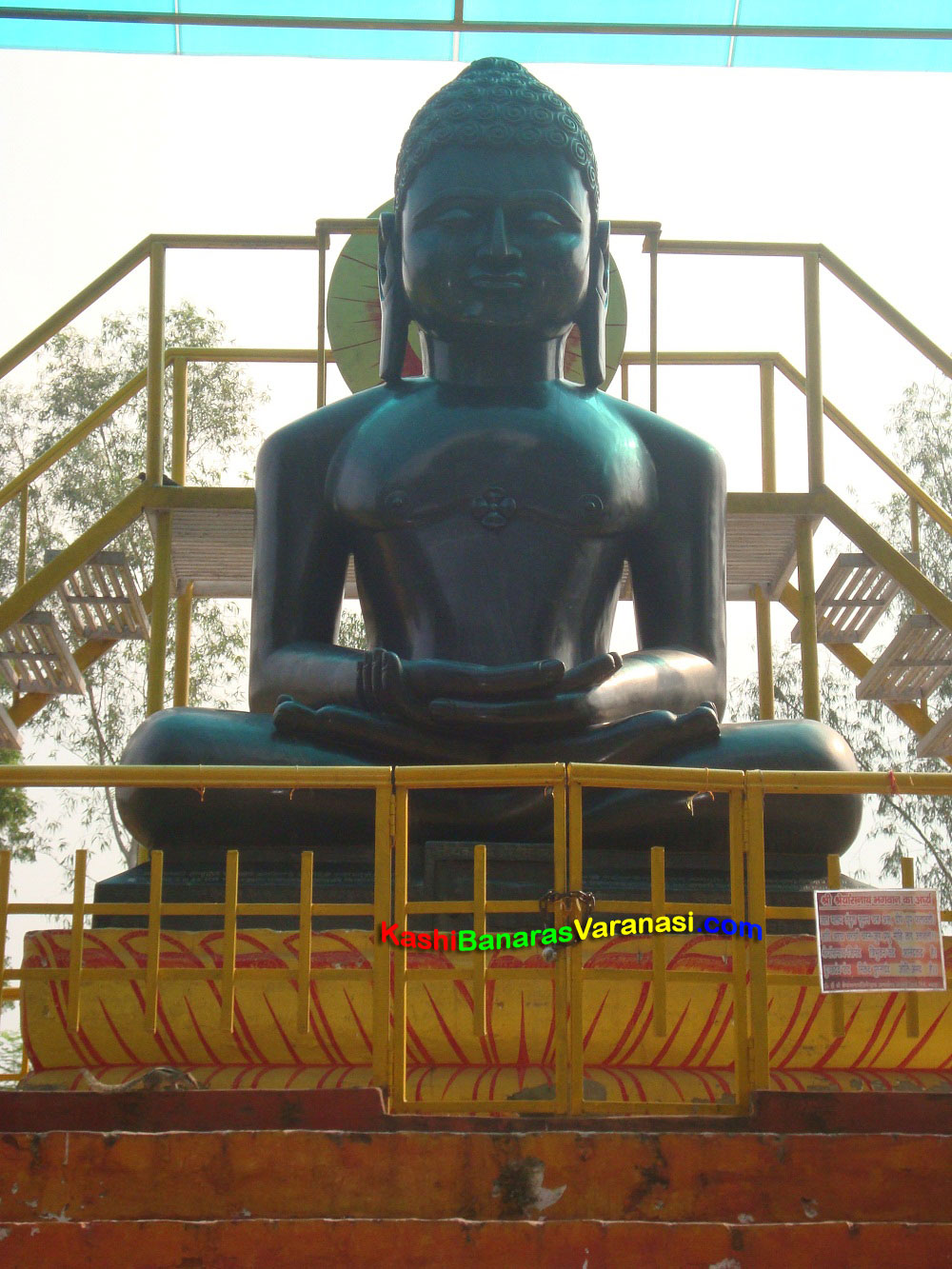
Nichigai Suzan Horinji Temple/Japanese temple: The Nichigai Suzan Horinji Temple is one of the Japanese temples located at Sarnath. This is a very nice temple of great importance to the Buddhism.
Migadawun Myanmar Temple: Migadawon Myanmar Temple is one of the earliest Buddhist Temples located at near to the Deer Park (means Migadava) at Saranath. It was built in the month of February in 1908. In February 2008 it had celebrated the Anniversary after completing 100 Years.
Burmese Buddhist Temple: The Burmese Buddhist Temple at Sarnath is a holy destination for the Buddhism, located at west side of Deer Park. It was built in the 1910 following the ancient Buddhist tradition, Theravada.
How to Reach Sarnath
Sarnath is about 10 kilometers from Varanasi, making it convenient for visitors to travel there using any kind of transportation. There are several affordable options for getting there. However, taking an auto-rickshaw or an Ola cab is the simplest option.
By Air: Lal Bahadur Shastri International Airport is the closest airport to Varanasi. Sarnath is about 20-25 kilometers away from there. After departing at the airport, you’ll need to take a taxi or some other kind of transportation to reach Sarnath.
By Train: Sarnath has its own train station and is well connected to local stations of Varanasi. The distance between Varanasi Cantt railway station to Sarnath is about 6 km. From Deen Dayal Upadhyay Junction, Sarnath is about 17 km. However, from Banaras station the distance of Sarnath is about 14 km. Upon reaching station, you can take a bus, cab, or a shared auto to reach the destination.
By Road: Road networks in and around Sarnath are adequate. You can go there through a taxi or a bus. If you like, you can use your own car or another mode of transportation. The bus stop, Chaudhary Charan Singh is about 6-7 km from Sarnath.
Best Time to Visit Sarnath
All seasons provide their unique charm to Sarnath. If you’re wondering when to visit Sarnath, the best months are from October to March. From April to October, the weather is extremely hot, making exploration difficult. When planning your trip, you may also want to take into account the various festivals celebrated here, which fill the area with the colors and chants of spirituality. Sarnath is a must-see for any tourist because of how beautiful it is and how important it is spiritually.
Origin of great names in Sarnath:
Mrigadava was named because of deer-park in sarnath. Isipatana was named because holy men have landed here. The devas rose into air and disappeared, only their sound fell on ground. It is believed that Pacceka Buddhas have spent their seven days in contemplation in the Gandhamādana and took bathe in the Anotatta Lake. After taking bathe in the lake he came to the habitations of men by the air. They came to earth at Isipatana through the air.
The Deer Park in the Sarnath was forest and gifted by the king of Benares for the purpose where deer might wander unmolested. Sarnath originated from Saranganath known as the “Lord of the Deer”. This park is still exists there today.
History of Gautama Buddha at Isipatana
The Gautam Buddha went from Bodhgaya to Sarnath after 5 weeks of his enlightenment. Before attaining his enlightenment, the Gautam has given up the Pañcavaggiya monks to his austere penances and friends then he left them and went to the Isipatana.
He enlightened five former companions using his spiritual powers as they were able to understand Dharma quickly. It is believed that he had to cross the Gange through air because he had no money to pay the ferryman. The Gautam Buddha had given his sermon to five monks known as his first sermon and called the Dhammacakkappavattana Sutta. He spent his first rainy season at the Mulagandhakuti of sarnath. The Buddha Sangha or community had grown from 5 to 60 in number. They sent by Buddha to all corner of the world to travel alone in order to teach the Dharma to people.
There are many other suttas preached by the Buddha at Isipatana besides the Dhammacakkappavattana, some of them are:
- The Anattalakkhana Sutta
- The Saccavibhanga Sutta
- The Panca Sutta
- The Rathakara or Pacetana Sutta
- The two Pasa Suttas
- The Samaya Sutta
- The Katuviya Sutta
- The Metteyyapanha of the Parayana
- The Dhammadinna Sutta
It is believed that, there is an ancient well at Isipatana which was used by the monks to live at the Buddha’s time.
Buddhism is flourishes in Sarnath because of kings and other wealthy merchants live in Varanasi. Sarnath had become a great center of arts by the third century. In the 7th century, it was noted that 30 monasteries and 3000 monks were founded at Sarnath.
Sarnath is famous because it has became a major centre of earliest Sammatiya school of Buddhism. At Sarnath, the image of Lord Shiva and Brahma were found. A Jain temple is located at Chandrapuri close to the Dhamekh Stupa.
Legendary characteristics of Isipatana
According to the Legends, it is believed that all the Buddhas of Buddha Sangha had preached their first sermon at the Isipatana. Isipatana is known by different names such as Khema-uyyāna and etc. Many of the ancient buildings were damaged by Turks but still an impressive Dhamek Stupa of 128 feet height and 93 feet diameter is stand at sarnath. The Chaukhandi Stupa and ruins of the Mulagandhakuti vihara denotes that Buddha met his first disciples and he spent his first rainy season respectively.
The modern Mulagandhakuti Vihara has beautiful wall paintings and cute deers are still to be seen there. The original Ashoka Pillar stands there surmounted by Lion Capital of Asoka but it was broken during Turk invasions. It has became the India’s National Emblem and national symbol of our flag.
Sarnath also known as Isipatana, is one of the four pilgrimage sites where Gautama Buddha has been designated. The other three are Kushinagar, Bodh Gaya, and Lumbini.
Sarnath has become a pilgrimage place in Varanasi for Buddhists of all over the world. In some countries the Buddhism has become dominant religion. Some of them are Thailand, Myanmar, Japan, Tibet, Sri Lanka etc.
Sarnath photos
It is the beautiful image of the notebook like big stone written the history of the Dhamekh Stupa. It was written in the 6th – 7th century. This circular stoned body was made up of the Mauryan bricks.
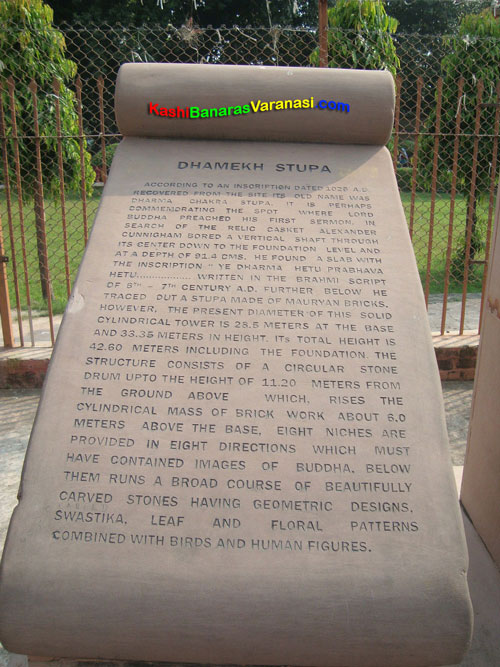
Shri Digambar Jain Temple
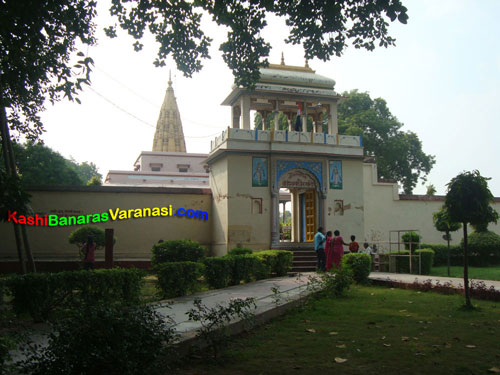
What an attractive look of the Shri Digambar Jain temple located at Sarnath. It has very nice, fresh and natural environment having very beautiful gardens on both sides. People come here to see the natural historical monuments at Sarnath.
This is the main entry gate of the Shri Digambar Jain temple at Sarnath. What a natural scenery it has. Devotees and travelers come regularly here from all over the India as well as outside the country to see this natural monument in the Varanasi. Some people are enjoying their great time at the entry gate.
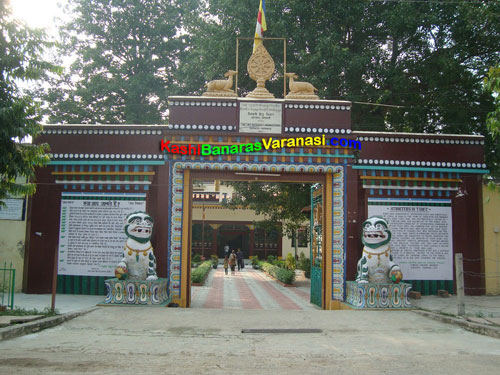
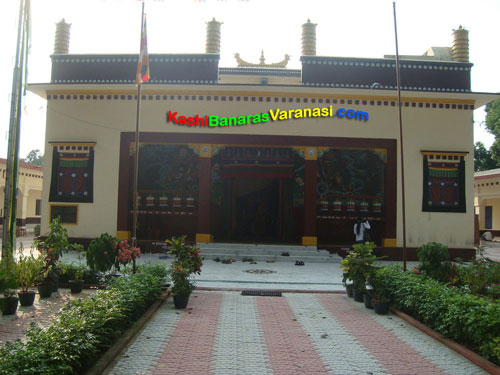
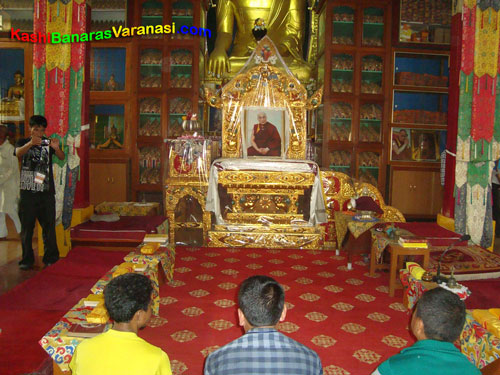
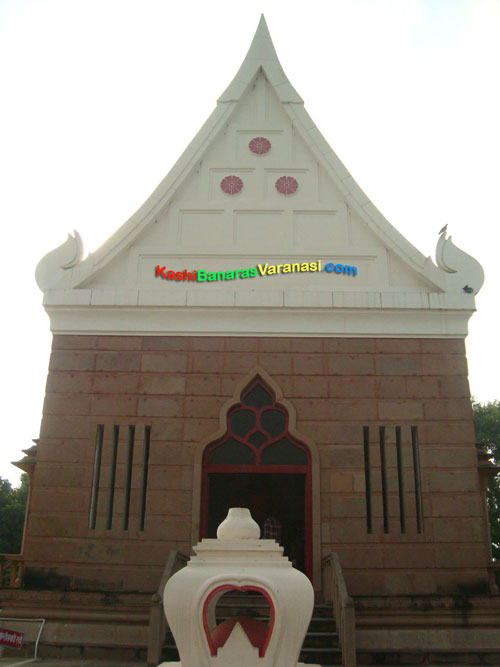
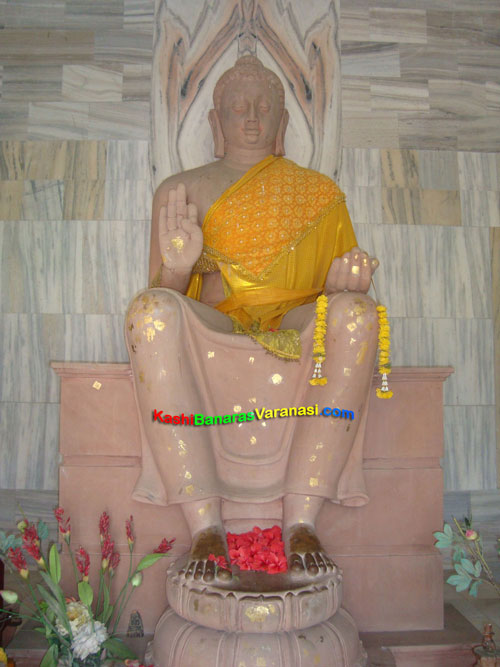
Temple of the Tibetan community
What a nice photo of the temple of the Tibetan community located at the Sarnath. It has beautifully organized entry gate having two nice Dwarpal on both side. Both side of the entry gate has written some information in the Hindi and Tibet language. Some people with their children are coming outside of the entry gate after seeing the Tibetan community temple.
This is the inside view of the temple of the Tibetan community. It is the main temple, Tibetan Buddhist monastery, located inside the main entry gate. Both side of the temple has beautifully organized gardens. A traveler is seen taking the snapshot of the temple.
This is the very inside view of the Tibetan Buddhist monastery, well designed and beautifully decorated. IT has the collection of many historical things. Devotees are sitting inside the temple and praying. One of the travelers is taking their snapshot from the side.
This the great picture of the Ashoka wheel located in the circle having 24 sticks. A huge photo of the Lord Buddha is located behind the wheel. Both side of the wheel has nice looking greenery scenes. A well lighting system is there to give an amazing look to the scene at night.
This is also the picture of the Ashoka wheel taken from another side. It is decorated with the lots of beautiful flowers in well organized manner. Surroundings greenery enhances its beautifulness.
Buddha statue
This is the picture of the Buddha statue located in the Sarnath. It is very big statue of the Lord Buddha looking very attractive and beautiful. It is a solid body made up of a stone structured by the architecture. Devotees are around the statue and looking at the statue.
This is also the picture of the Lord Buddha taken from long distance to capture the natural scenes around. People are enjoying the scene by wandering all around.
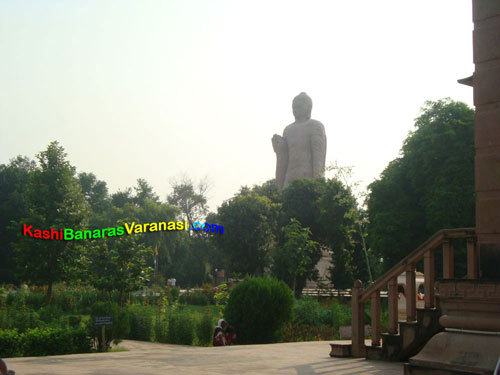
This is the much closer view of the photo of the Lord Buddha taken to show the natural beauty of the statue and art of the architecture.
This is the side view picture of the Buddha temple taken to show the sidewise natural looking of the scene. One of the travelers sits in the garden to have some shadow and rest. People are wandering inside the temple to have full pleasure.
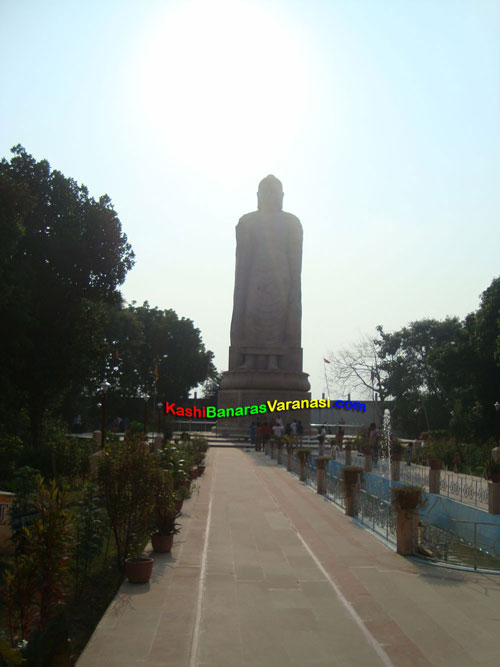
This is the picture of the Lord Buddha temple located inside the Sarnath. A small pond full of water enhances its beautifulness. It has nice looking environment and greenery scenes.
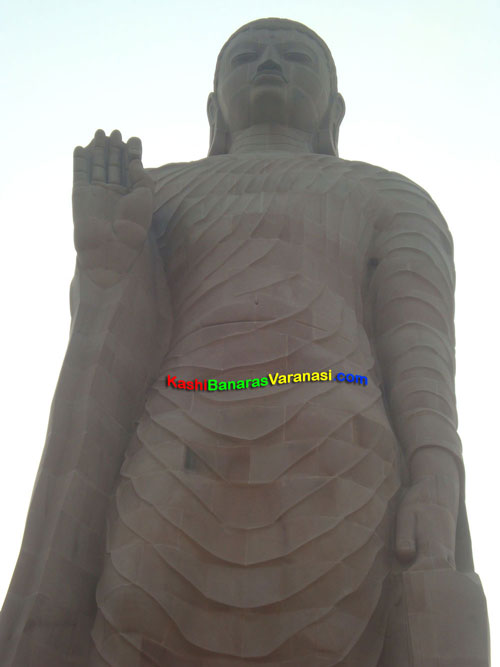
This is also the one part of the Lord Buddha temple located in the Sarnath. It is very beautifully organized temple looking very attractive and amazing.
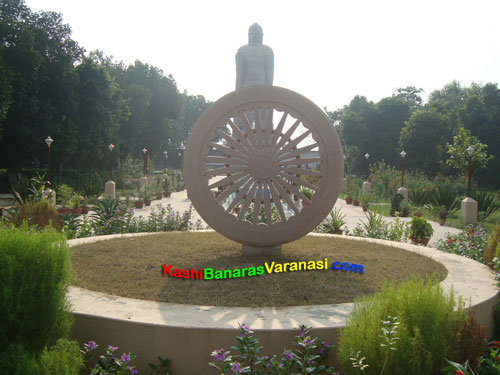
This is the picture of the Lord Buddha located inside the Buddha temple at Sarnath. What a nice looking image made up of the stone and wrapped in the yellow cloth. There are some flowers in the feet of the Buddha offered by the devotees.
Ashokan Pillar
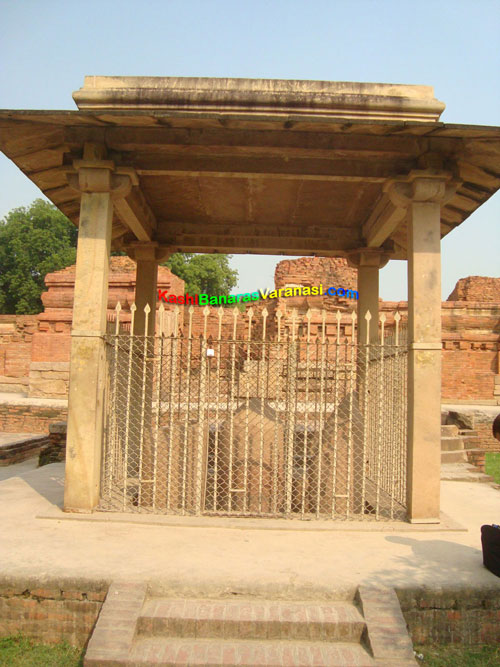
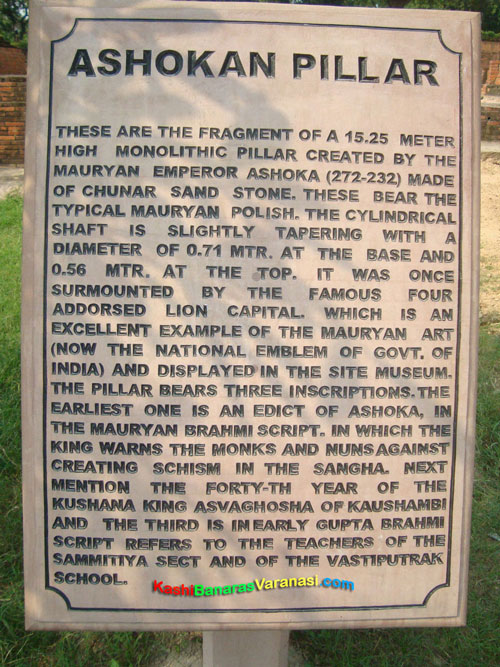
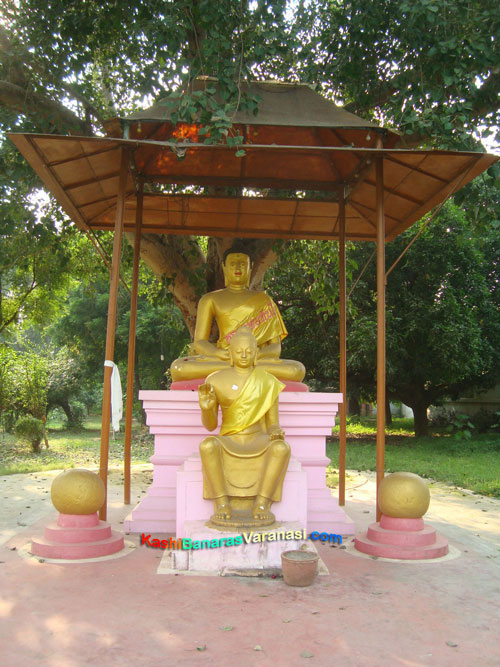
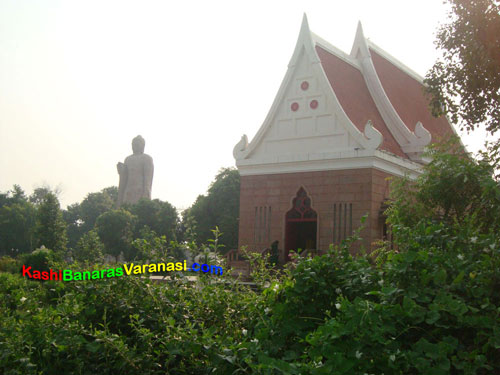
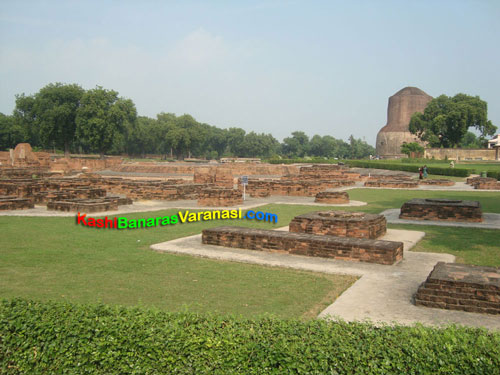
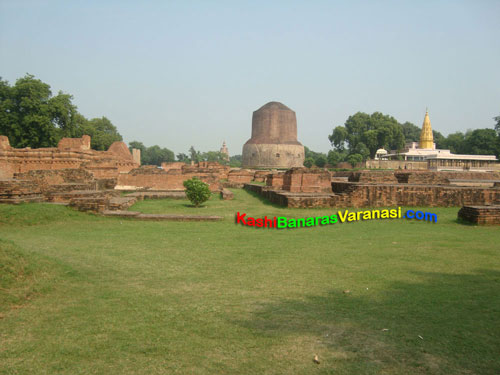
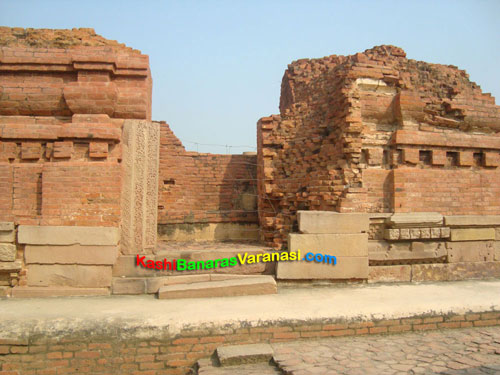
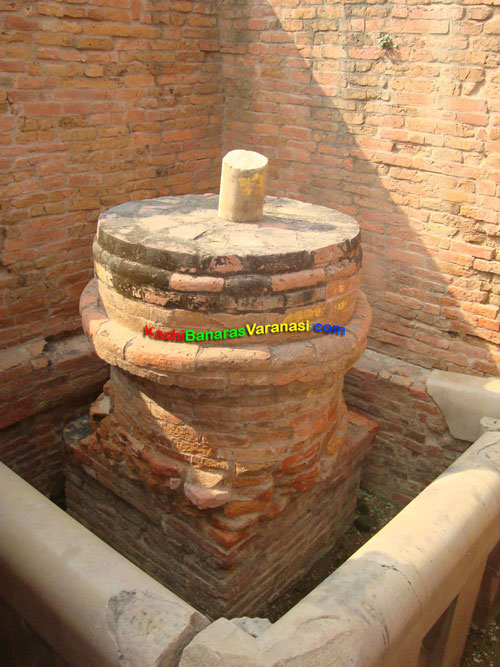

This is the picture of the Ashokan Pillar located at Sarnath. It is netted with the net for security purpose. Back side of the pillar has historical monuments.
This is the image of the stone notepad in the side of the Ashokan Pillar written the history of the Ashokan Pillar. This Ashokan Pillar was created by the Mauryan Emperor Ashoka using Chunar Sand stone.
This is the side view of the Buddha temple located at Sarnath showing the natural scenes of the nature. People are enjoying the beautifulness of the temple.
This is the amazingly looking photo of the Lord Buddha inside the Buddha temple. A golden statue of the Lord Buddha is looking very attractive and so natural. This statue is located beneath the Pepal tree inside a temple looking structure. One of the statue is showing meditation and another one giving blessings to the devotees.
This is another pic of the Buddha temple with the long statue of the Lord Buddha in the side at Sarnath. What an amazing look of the greeneries in the surroundings.
This is the pic of the Dhamek Stupa taken from long distance to have other small historical monuments of the time of Lord Buddha. Travelers are wandering inside the surrounding area to seen the historical monuments and their importance.
This is also the pic of the Dhamek Stupa taken from side to have the look of other small historical monuments.
This is the pic of the real small monuments of the time of Lord Buddha. These monuments are real and as it were without any changes.
It is a monumental railing made up of the Chunar sandstone and discovered by the Mr. Oertel during digging in 1904 and 1905. It measures around 2.54m in length.
This is the picture of the Dhamek Stupa taken from small distance to have accurate view of this historical monument.
Mulagandha Kuti
This is the picture of the Mulagandha Kuti located at Sarnath, Varanasi. Mulagandha Kuti history is written on the stone notebook to have real ideas of it.
This is also the image of the Mulagandha Kuti taken from much closer to have clear look of the history. This is the place where Lord Buddha was used of meditating.
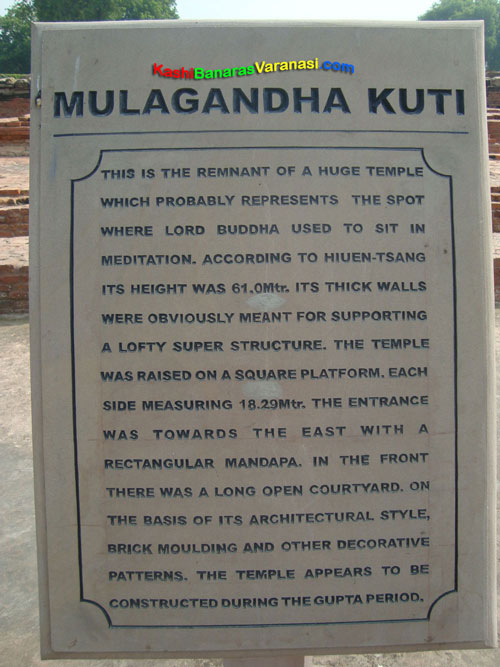

Sarnath Tourism
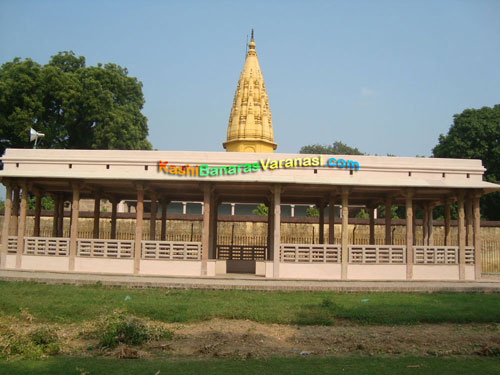
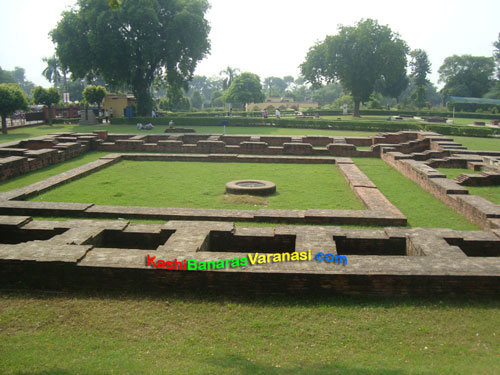
This is the picture of the newly built structure at Sarnath showing the Buddha temple behind it. Regular working is continue at this place to add attraction.
This is the pic captured to show the real art of that time. It is full of natural look and greenery scenes.
Dharamshala at Sarnath: This is the picture of the Dharamshala at Sarnath, Varanasi. It is built to fulfill the purpose of providing shelter to the travelers came to visit Sarnath.
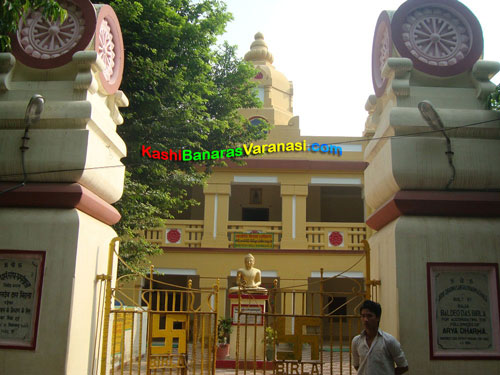
FAQs on Sarnath
Ans. Sarnath is a special place for people who follow Buddhism. It is located near Varanasi in India. It is a place where Buddha taught his followers about Buddhism long ago. Many Buddhists come here to worship and show respect to Lord Buddha.
Ans. The Lion Capital of Ashoka is a symbol made by Emperor Ashoka a long time ago in Sarnath, India. It was originally on top of a big pillar, but now it’s in a museum.
Ans. Some historians argue that Buddha selected Sarnath because it was situated near Varanasi, a city renowned for its scholarly pursuits. This would allow him to engage in discussions with knowledgeable individuals and bring his teachings directly to the heart of Vedic tradition.
Ans. In the past, some Turkish Muslim invaders came to Sarnath and ruined a lot of things there. But still Sarnath is a very important place for Buddhist learning for a long time.
Ans. Sarnath, located in Varanasi in UP, was called by different names a long time ago. It is known as Sarangnath, Isipatana, Rishipattana, Migadaya, or Mrigadava in ancient times.

